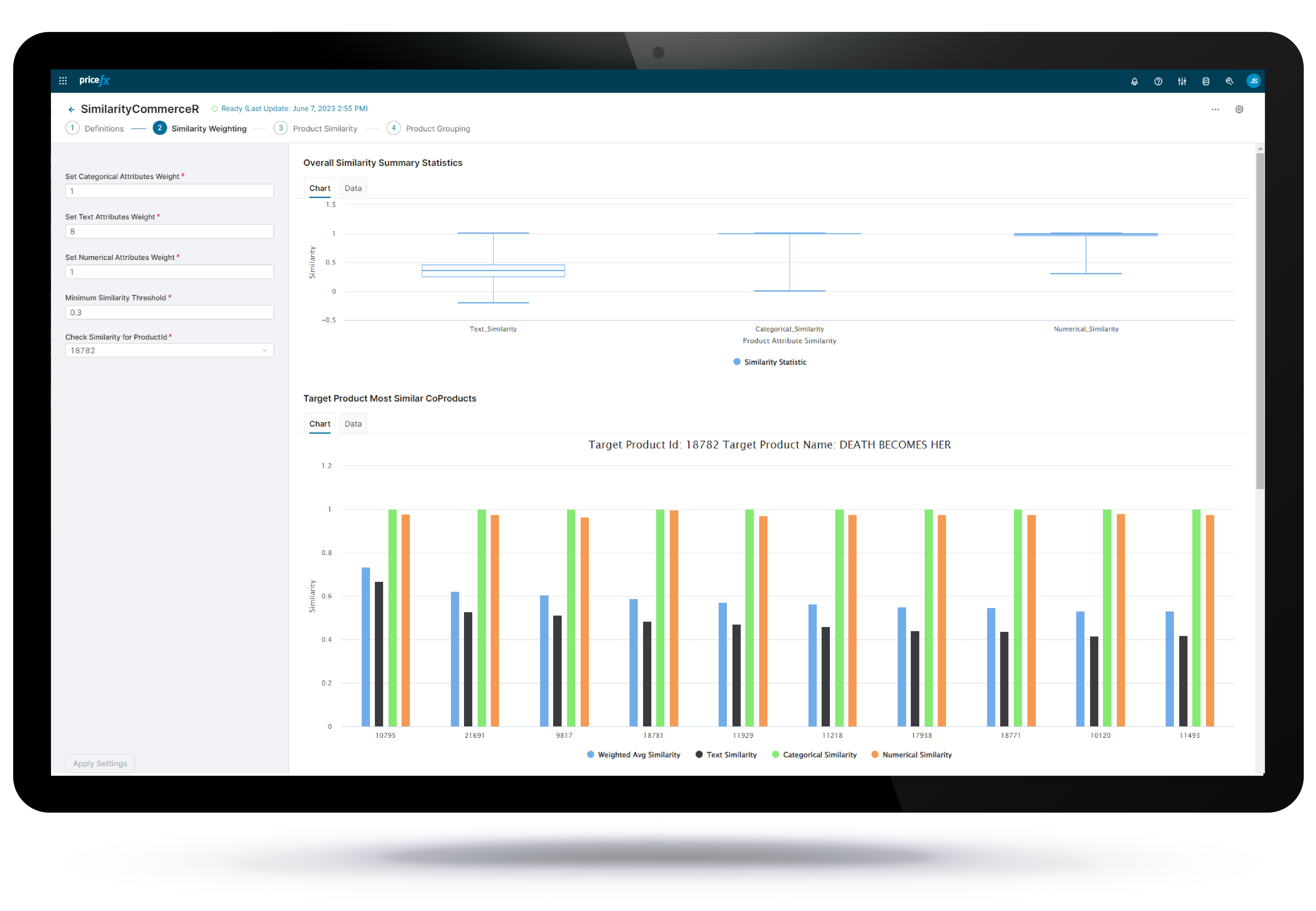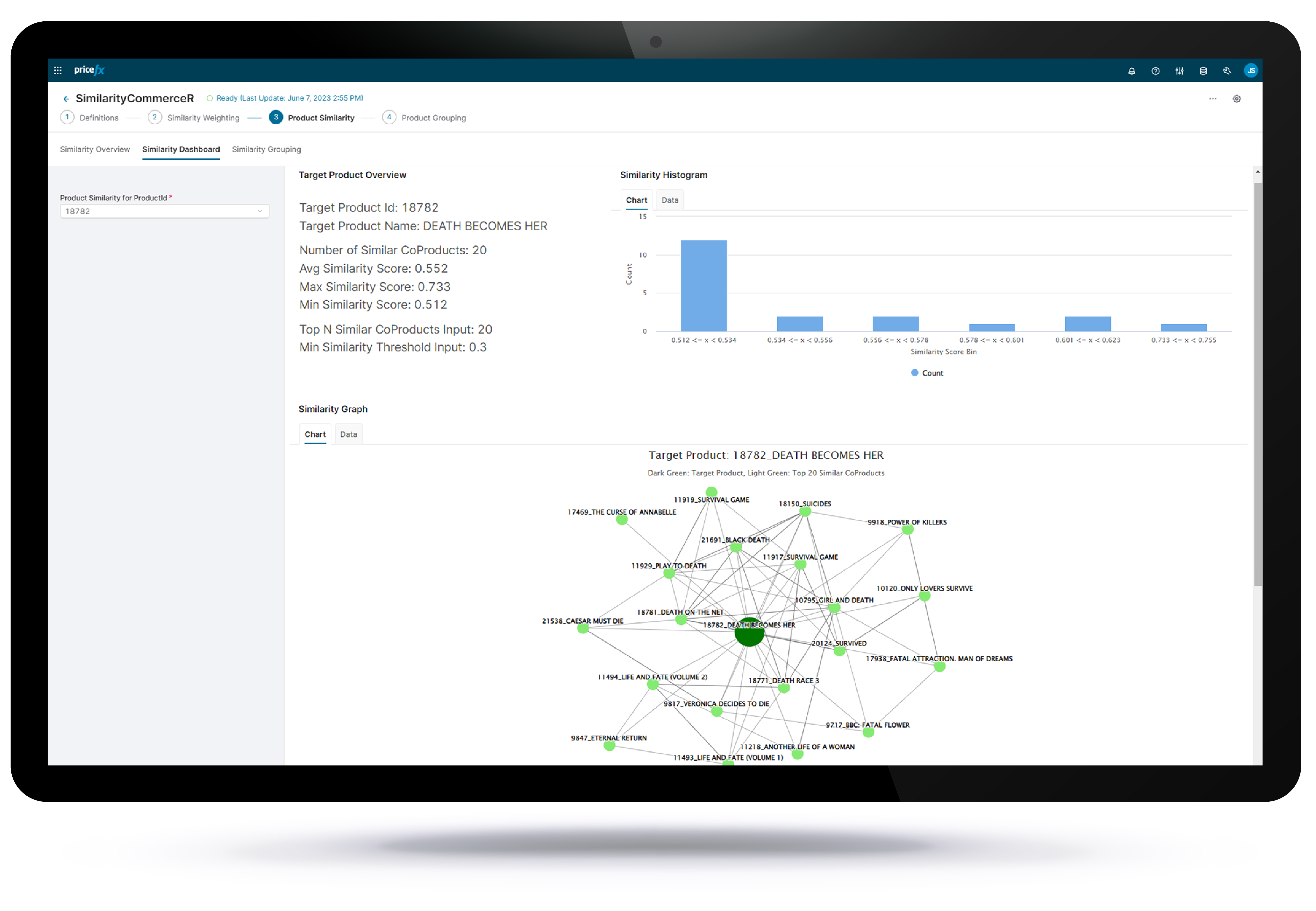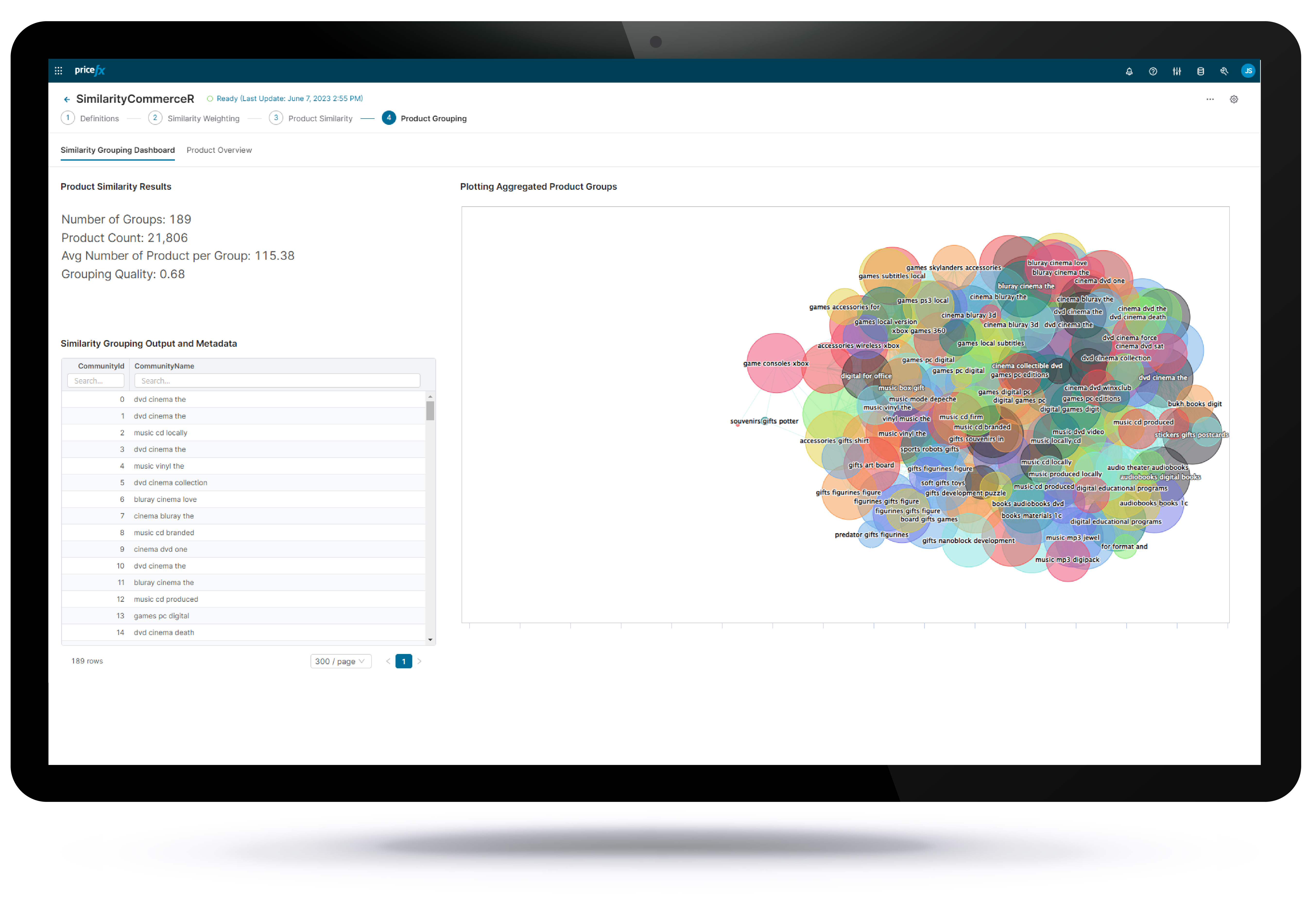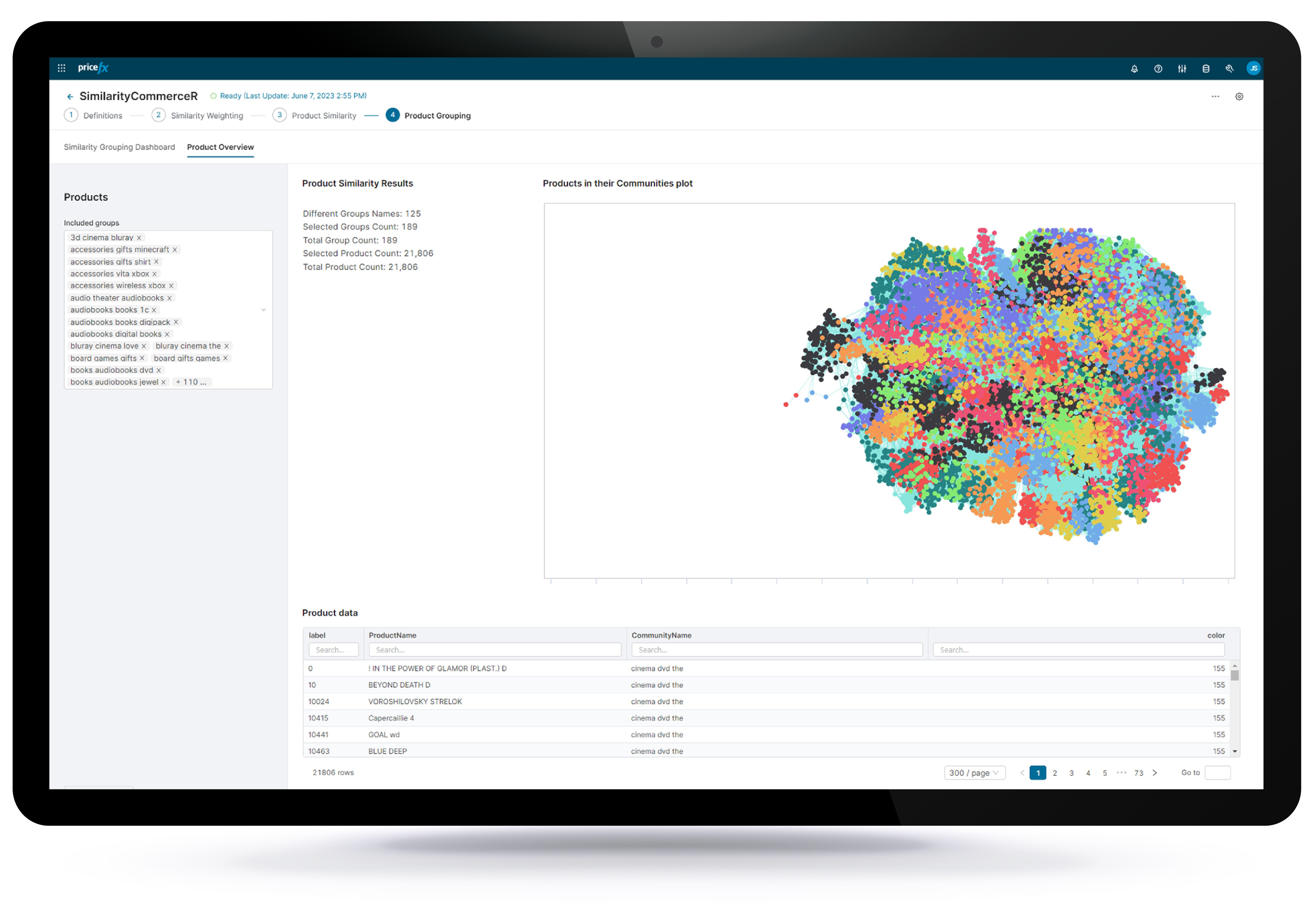Grouping Product Families: How Pricefx Can Help
September 18th, 2023 (Updated 04/04/2024) | 9 min. read
Discover the art of grouping product families efficiently and unearth how it can revolutionize your retail business. Failing to organize product families can lead to lost sales and frustrated customers. But don’t worry, Pricefx has got your back! Learn how our innovative pricing software can help you group products seamlessly, optimize sales, and boost your revenue. Say goodbye to inventory management nightmares and hello to a clutter-free, customer-friendly shopping experience. Get ready to watch your profits increase by unlocking the secrets of grouping your organization’s product families efficiently and effectively.
For over a decade, Pricefx has partnered with countless retail businesses worldwide, empowering them to boost profitability and optimize efficiencies. Our innovative technology enables retail organizations to effortlessly organize, monitor, and dynamically adjust the prices of stable product family groups in real-time, responding promptly to dynamic sales, uncertain and rapidly shifting market conditions, and product attributes.
In this article, we will briefly define product families and the pros and cons of grouping them, before analyzing why pricing software and data science produces the best product family grouping outcomes. And of course, we’ll share the secret sauce of how the Pricefx solution helps organize products into family groups.
Product Families & Why They Are Grouped: Explained
In retail, product families refer to groups of related products that share similar characteristics, features, or target audiences. Grouping them together is crucial for fulfilling various retail business objectives, such as maximizing sales, enhancing customer experience, and optimizing inventory management.
For instance, an electrical retailer may group laptops, wireless into a product family whereby several different laptops belonging to the same brand and model release are all grouped into the same family. By doing so, customers are more likely to purchase multiple items from the same family, leading to increased average transaction value and higher revenue for the retailer.

Furthermore, product families in retail can aid retailers in managing their inventory effectively. By analyzing which products within the ‘laptop family’ are selling well, and which are not, retailers can optimize their inventory levels, preventing stock-outs or overstocking that may negatively impact profitability. With proper grouping, retailers can strike a perfect balance, ensuring they have sufficient stock of in-demand products while minimizing excess inventory.
The Pros of Grouping Products into Families
The main advantages of grouping your retail company’s products into families all revolve around understanding the ways your customers are reacting with your assortment:
- Improved Customer Experience: Grouping products into families helps customers easily find related items, leading to a smoother shopping experience and increased satisfaction.
- Efficient Inventory Management: By organizing products into families, retailers can optimize inventory levels and avoid overstocking or understocking specific items.
- Targeted Pricing Strategies: Product families enable retailers to implement tailored pricing strategies based on customer preferences and regional market demands.
- Streamlined Decision Making: Having a clear view of product families allows retailers to make informed pricing decisions, aligning prices across the entire family for consistent and logical pricing.
The Cons of Grouping Products into Families
The main disadvantage of product families in most industries including retail is the level of complexity involved.
This can make it a challenge to track and organize product connections, especially for dynamic retail environments where products and market conditions change frequently. Out of that complexity, negative outcomes can sometimes arise such as:
- Cannibalization: Poorly executed product families can lead to cannibalization, where certain products within the family compete against each other, resulting in reduced sales and profitability.
- Overstock and Out-of-Stock Challenges: Balancing inventory levels within a product family requires careful planning to avoid overstocking certain items while facing shortages of others.
- Pricing Consistency: Maintaining pricing consistency across the product family can be challenging, especially when dealing with promotional offers or changes in market conditions.
Why Does Data Science & Pricing Software Produce the Best Product Family Grouping Outcomes?
Data science and pricing software offer a potent combination when it comes to achieving optimal product family grouping outcomes for retailers. In a nutshell, if it is data-driven, the results are the most accurate possible (data-quality dependent).
Leveraging advanced algorithms and data analytics, data science can thoroughly analyze customer behavior, purchase patterns, and preferences. By scrutinizing vast amounts of historical data, data science can identify meaningful connections between products, and sometimes discern which items are often purchased together, and at other times look for products belong together but don’t cannibalize themselves. For example, you may purchase a 60-inch TV or a 75-inch TV, but rarely both. This crucial information empowers retailers to create well-defined product families that align with customer preferences, driving cross-selling opportunities and increasing overall customer satisfaction.
Incorporating pricing software further enhances the process, as it allows retailers to consider various pricing strategies and factors when creating product families.
By incorporating pricing analytics and demand elasticity insights, pricing software can pinpoint the most effective pricing structures for different product combinations within a family. With the ability to optimize prices based on market conditions, competitor pricing, and customer preferences, pricing software ensures that the product family grouping is not only logical from a customer perspective but also financially viable for the retailer.
In this way, data science and pricing software work hand in hand, leveraging data-driven insights to produce product family groupings that maximize revenue potential and meet both customer needs and business objectives.
The 3 Ways Pricefx Helps Retailers Group Product Families
When it comes to organizing product assortments, retailers often face the challenge of grouping related items together in a way that maximizes customer satisfaction and boosts sales. Pricefx offers three powerful ways to assist retailers in efficiently creating product families. We’ll run through the first two before spending more time on the most powerful and incisive of the methods – Artificial Intelligence (AI) informed product similarity scoring.
1. Automatic Data Integration
The first and most straightforward method is the integration of product family information from downstream systems. Many retailers already have this valuable data available in their systems, defining how products are related to each other. For example, a pet food retailer might have information on assorted sizes and variants of the same product, with specific reference tables indicating how they are related. Pricefx seamlessly consumes this information and uses it to automatically group products into families.
This approach is not only convenient for retailers but also ensures accurate and up-to-date product family groupings, improving customer experience and streamlining pricing strategies.
2. Manual Maintenance
Some retailers may not have the luxury of downstream product family information readily available. In such cases, Pricefx offers a manual maintenance approach that empowers retailers to create and manage product families themselves. Through an intuitive user interface, retailers can easily select products and define their family associations, tailoring the groupings according to their unique business needs.
This hands-on method allows retailers to have complete control over their product families, even if the information is not readily available in other systems. By manually managing the groupings, retailers can ensure precise and tailored product assortments that resonate with their target customers.
3. AI-Informed Product Similarity Scoring
The most advanced and cutting-edge approach offered by Pricefx is AI-driven product similarity scoring and as such, we will spend most of our time here.

Leveraging state-of-the-art natural language processing and data analytics, Pricefx’s AI technology can analyze vast amounts of data to detect similarities between products.
Pricefx has embraced the power of artificial intelligence (AI) to assist retailers in grouping products into families effortlessly, much like the way ChatGPT intelligently separates and analyzes different text blocks.
The process starts by exposing relevant data to the underlying AI technology, much like ChatGPT’s ability to understand text and identify similarities between various strings. Pricefx’s AI-driven approach allows retailers to select transactional data, such as sales data, and define key attributes that determine product similarity. These attributes may include product descriptions, categorical information (e.g., product category, competitors), and numerical factors (e.g., price, cost).
Once the data scope and attributes are defined, the AI goes to work, weighing the significance of each attribute in determining product similarity. The system assigns similarity scores to assorted products, highlighting which items are closely related and could belong to the same family. By considering factors like label comparisons, shared attributes, and pricing proximity, Pricefx’s AI generates valuable insights into product groupings.

Imagine a retailer selling electronics, with multiple versions of smartphones, tablets, and laptops. Through AI-powered analysis, Pricefx’s system may identify that the various iPhone models, despite their differences in storage capacity, color, and other features, should all be part of the “Apple iPhone Family.” Moreover, the AI might recognize that Samsung Galaxy tablets with different screen sizes and storage options could be grouped into the “Samsung Galaxy Tablet Family.” These AI-generated insights are instrumental in creating comprehensive product families that align with customers’ preferences.
The product similarity scores also contribute to the creation of heatmaps, visually representing the connections between products. Heatmaps illustrate which products share a high degree of similarity, allowing retailers to visualize potential product families.

As a result, retailers gain a deeper understanding of product relationships and can fine-tune groupings based on AI-generated insights.
With AI as a powerful ally, Pricefx enables retailers to go beyond manual maintenance or reliance on downstream information. Instead, retailers can leverage AI-driven product similarity scoring to achieve remarkable efficiency and accuracy in product family creation. This advanced technology equips retailers with the ability to identify hidden patterns and group products based on shared attributes and customer preferences.
Moreover, the AI’s flexibility allows retailers to set a minimum similarity threshold, defining how closely related products must be to be considered part of the same family.


Retailers have the freedom to adjust these settings, ensuring product groupings align with their unique business objectives.
But Which Pricefx Package Does My Retail Business Need?
Pricefx offers a suite of powerful solutions for retailers seeking to optimize their product assortments through effective product family groupings.
Whether it’s automatic integration from existing systems, manual maintenance for more hands-on control, or AI-driven product similarity scoring for data-driven insights, Pricefx empowers retailers to create product families that drive customer satisfaction, enhance inventory management, and boost revenue. By harnessing the capabilities of Pricefx, retailers can unlock the full potential of their product assortments and thrive in today’s competitive retail landscape.
But to get it done, you may be wondering what Pricefx packages are out there and which of them best suits your retail company’s needs?
Check out this handy article for a brief overview of the Pricefx packages on offer:

